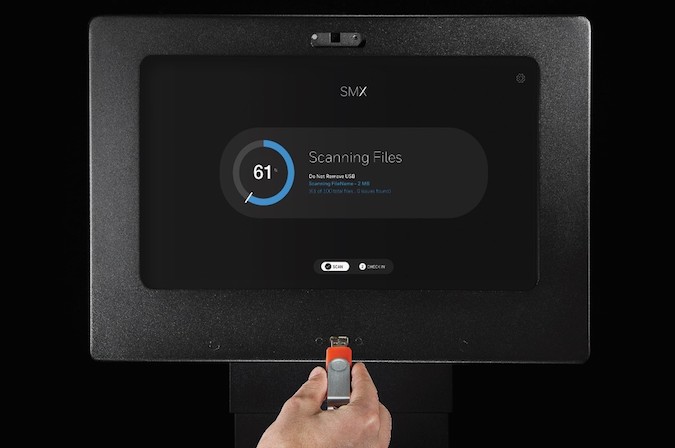
Honeywell announced on Tuesday the launch of a new product designed to protect industrial facilities from USB-borne threats by providing a simple way for organizations to track the removable media devices connected to their systems.
The new product, Secure Media Exchange (SMX), has two main components: an intelligence gateway and a piece of software installed on endpoints.
When a contractor wants to use a USB drive in a protected organization, they need to check the device at the intelligence gateway, a touchscreen system that can reside at the physical front desk or another location where it can be easily accessed by visitors.
Before entering the facility, users are prompted to complete a check-in procedure by connecting their USB drive to the gateway. The files stored on the drive are verified by Honeywell’s Advanced Threat Intelligence Exchange (ATIX) cloud service, which relies on both signatures and behavior analysis (i.e. running suspicious files in a special ICS sandbox) to identify known and zero-day threats.
According to Honeywell, the check-in process typically takes as long as a regular malware scan, depending on the size of the drive and the number of files. The ATIX service checks for known good and known bad files to expedite the process, and the scan can also be sped up by quarantining all files except for the ones that need to be used.
Once the process has been completed, the user can take the USB device and attach it to any endpoint within the organization. Devices that have not been checked by the gateway (e.g. a contractor wants to connect their smartphone for charging) will be blocked from using the endpoint’s USB port.
The SMX client software running on endpoints will ensure that access to the files on a device is restricted if the check-in process has not been completed or if signs of tampering are detected.
In order to prevent malware from entering an organization, suspicious files are quarantined inside a password-protected archive file. Administrators can also block specific file types from getting into the facility.
Learn More at SecurityWeek’s ICS Cyber Security Conference
When a contractor leaves the site, they will need to complete a check-out process at the SMX gateway. Failure to complete the process can result in the inability to access the files on the removable media device from a different computer. However, Honeywell says there are mechanisms in place to allow users to conduct the check-out process at a later time (e.g. a contractor could forget to complete the process when leaving an offshore platform via helicopter).
In addition to giving the user access to his/her files, the check-out process is designed to scan the device once again for malware in an effort to identify any threats that may already be inside the plant.
There have been several high-profile incidents where USB drives had been used to plant malware on an industrial network, including the notorious Stuxnet attacks and a 2013 incident that affected two US power plants.
Malware delivered via removable media is considered one of the biggest threats to industrial environments, but this type of storage is often required to perform updates. The risk is not easy to address, especially since, according to Honeywell, on average, an organization has seven different brands of control systems that require USB updates, and the number of daily contractors on site ranges between 25 and 150.
Related: Non-Targeted Malware Hits 3,000 Industrial Sites a Year
Related: Bechtel Opens Industrial Cyber Security Lab
Related: Rockwell Automation Teams With Claroty on Industrial Network Security














